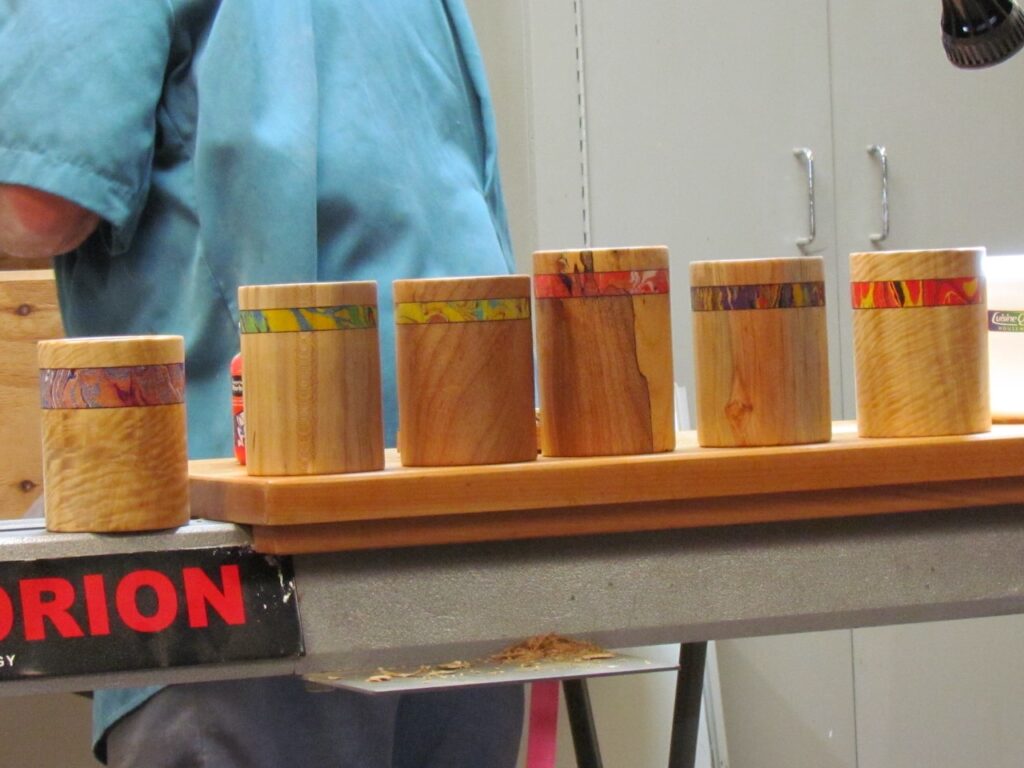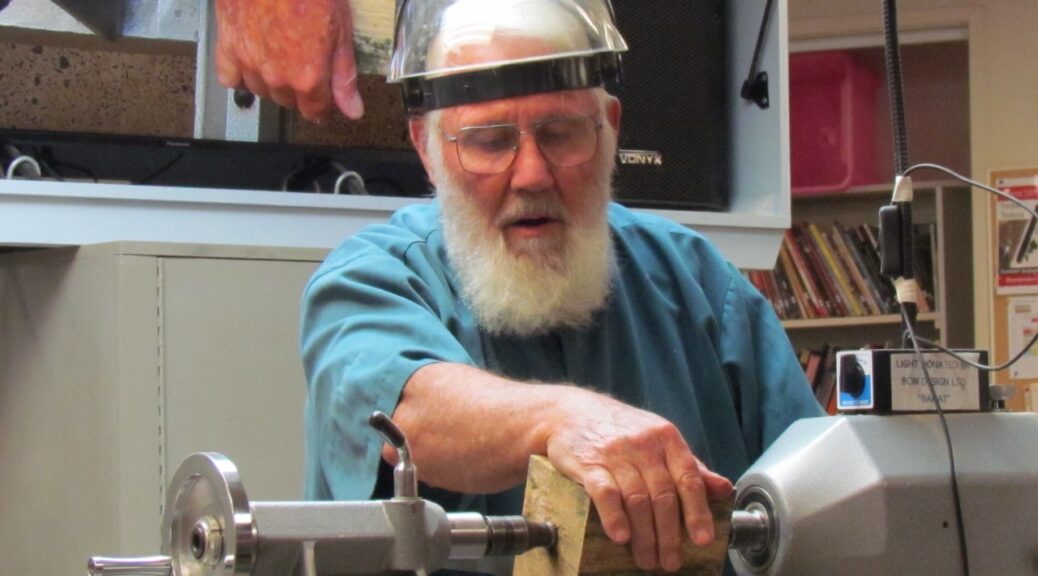Club Meeting: 17 March 2021
Report by: Grant Miles
Start with a block approx. 100mm by 125mm long the timber used was wet kauri .
Mount between centres
A 70mm chuck bite on one end is preferred over a 50mm bite.
Use the parting tool to make the chuck bite turn down for a 70mm bite. Made easier as Dicks parting chisel has an angle on its cutting edge.
Mount in the chuck using the bite.
Hollow using the largest forstner bit
Set lathe to 160rpm as per the forstner cutting speeds table. Found on the website or in the clubs forstner bit box. Make sure the bit is sharp
Set the drill so the centre point stops 12mm from the bottom. Tape the shaft of the drill at this depth.
Feed the drill in to the work using constant even pressure and keep it cutting
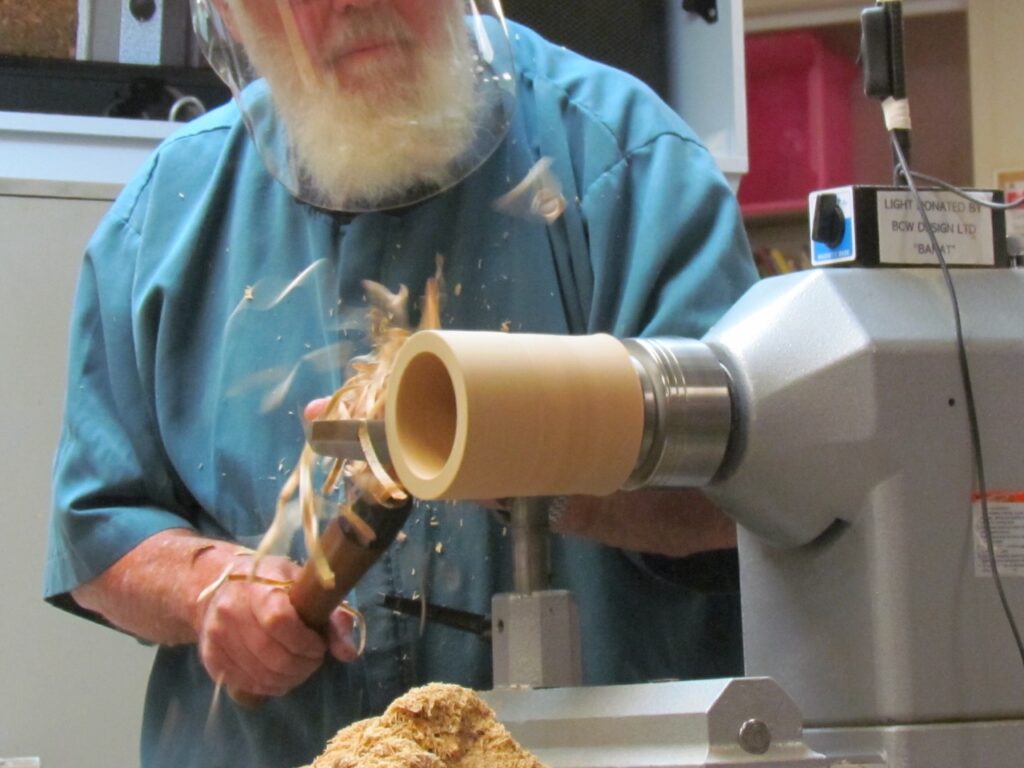
Using a spindle roughing gouge turn the outside of the pencil block round and parallel along its length.
Using a Soren Berger hollowing tool set it to centre height adjusting the tool rest. Make sure the cutting edge is flat and working from the middle towards the outside more the tool across the bottom to remove the centre mark left from the forstner bit.
Sand finish the inside using flapper wheels and sand paper on wood with foam around it it until the inside is cleaned up.
Remount in 100mm chuck using a piece of 100mm drain pipe with a cut in it. So it clamps tight on the outside of the work.
Marbling Prep.
Using the skew chisel cut two lines around the circumference to frame the area to be marbled.
Paint the pencil pot with alum. After alum has dried buff off with 0000 steel wool to remove raised grain.
Run masking tape around the edge of the two lines which have been cut.
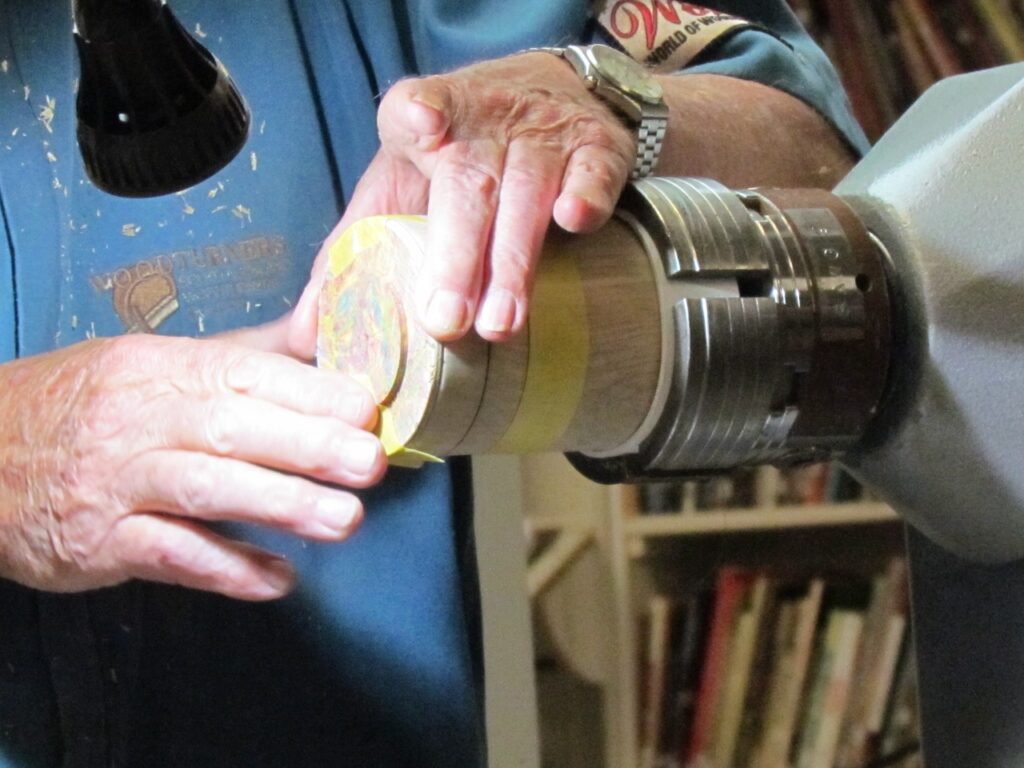
Cover the end of the pencil pot using a blanking plate taped in place. Run a finger nail around the edge of the tape to make sure it has sealed.
The framing lines will not be removed or covered by the colour.
Then in a mixture of methyl cellulose (available from Takapuna Art supplies) mixed as you would size. Mix the methyl cellulose with distilled water (available at the supermarket). Poor this into a bowl deep enough to cover the area to be marbled.
Remove bubbles
Drop colours onto the solution. Drop black into the bowl it will float on the surface do this first. Add additional colours. (Dick used Jacouard Marbling colours available form Warehouse Staionary) Can use poster paint, resene test pots e.t.c. (thinned down) More than 4 colours plus the black, can make the marbling appear to busy. Drop the colours in randomly. On this occasion Dick added black first ,then randomly dropped in red, green, yellow and blue until he had built up enough colour and as further drops were added they no-longer spread across the surface.
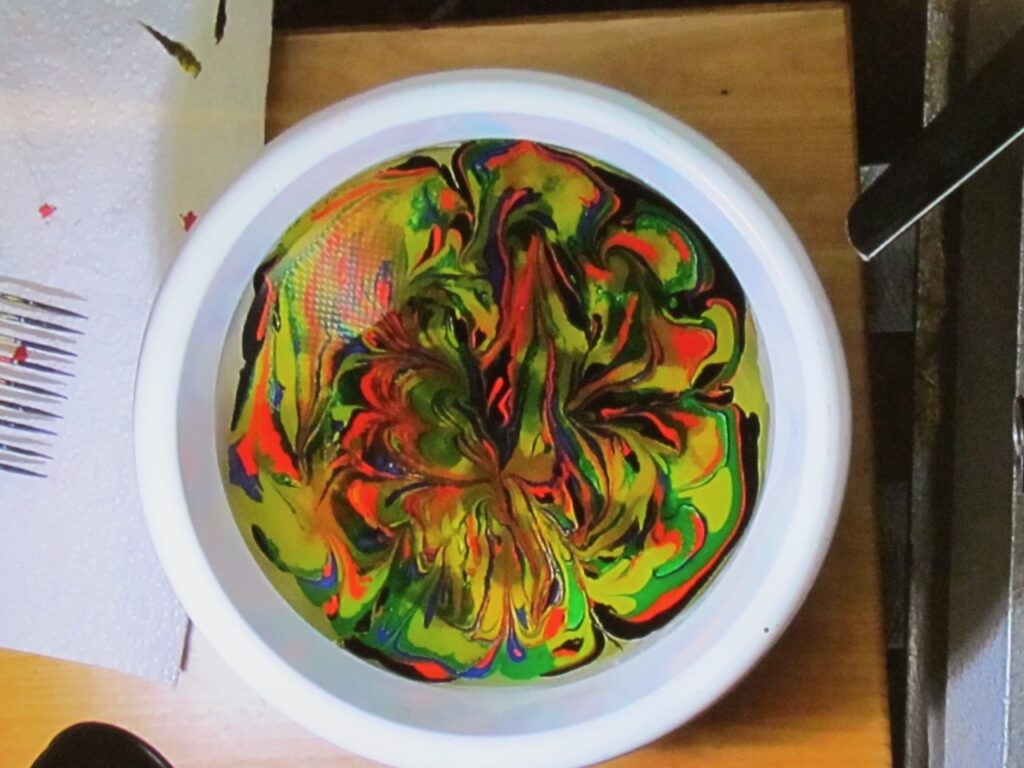
Using a toothpick drag the tooth pick through the colours to make a pattern. Using a rack or toothpick continue to move through the surface until a pattern is produced on the surface.
Dip the turning into the mixture until the area to be marbled is covered. Withdraw from the solution and wash off under water.
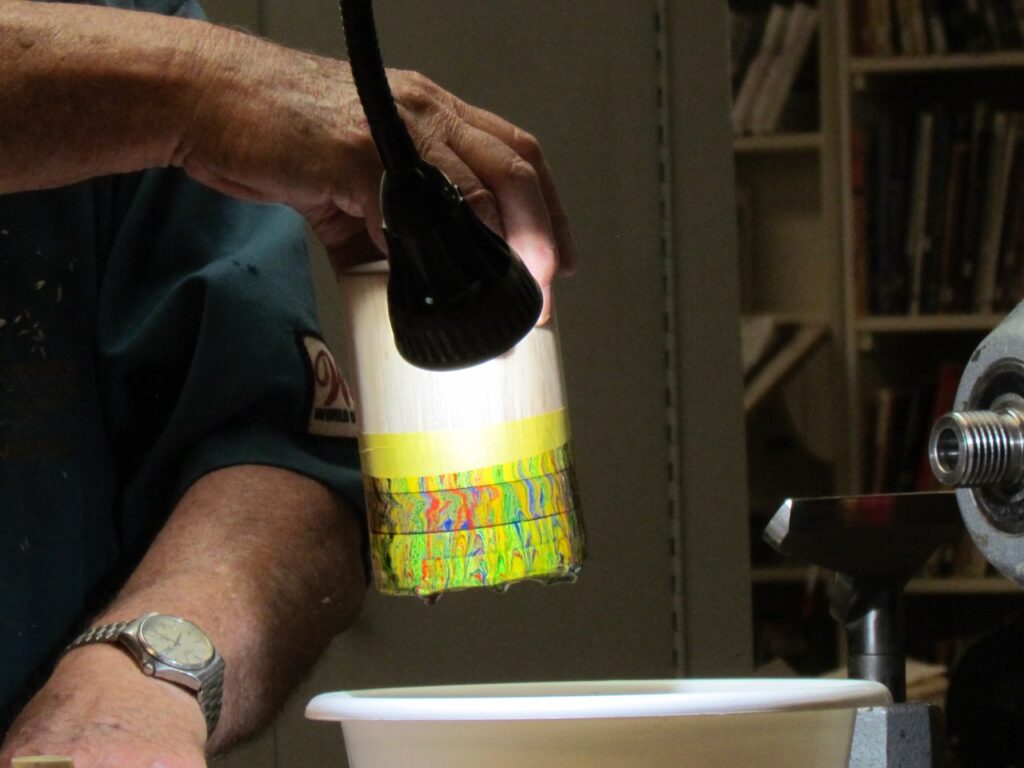
The tape can be removed straight away and when dry a spray laquer applied to finish the project. Stylewood 30 was used to finish the items Dick had on display.
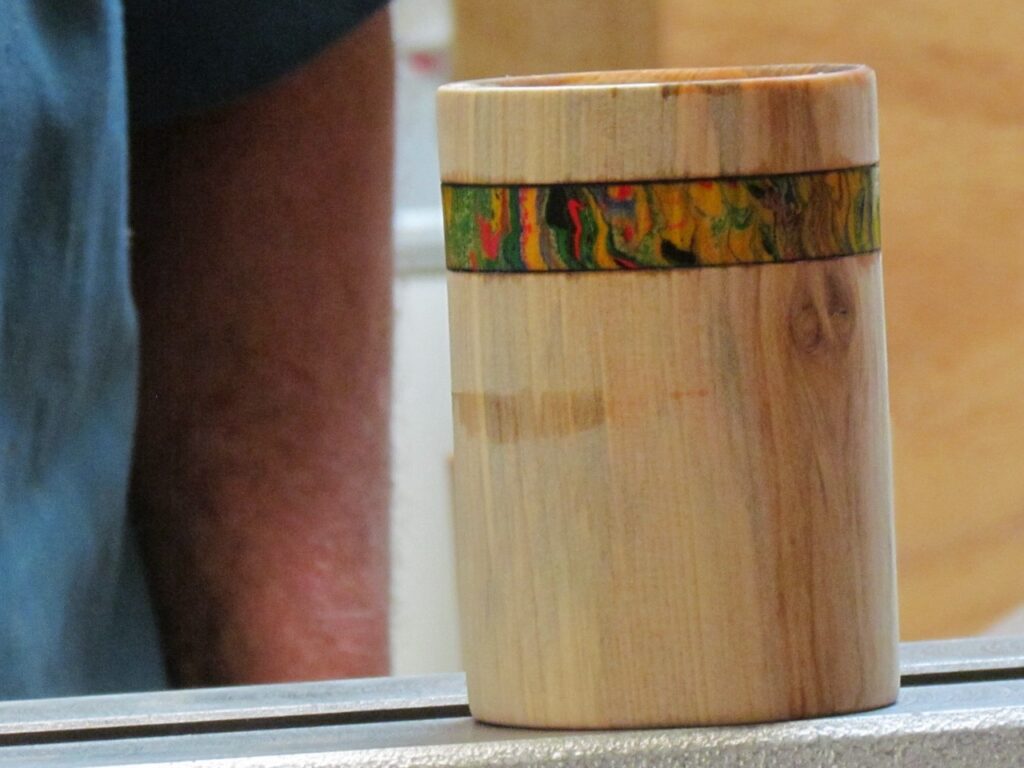
Thank you for a most interesting and informative demo.
